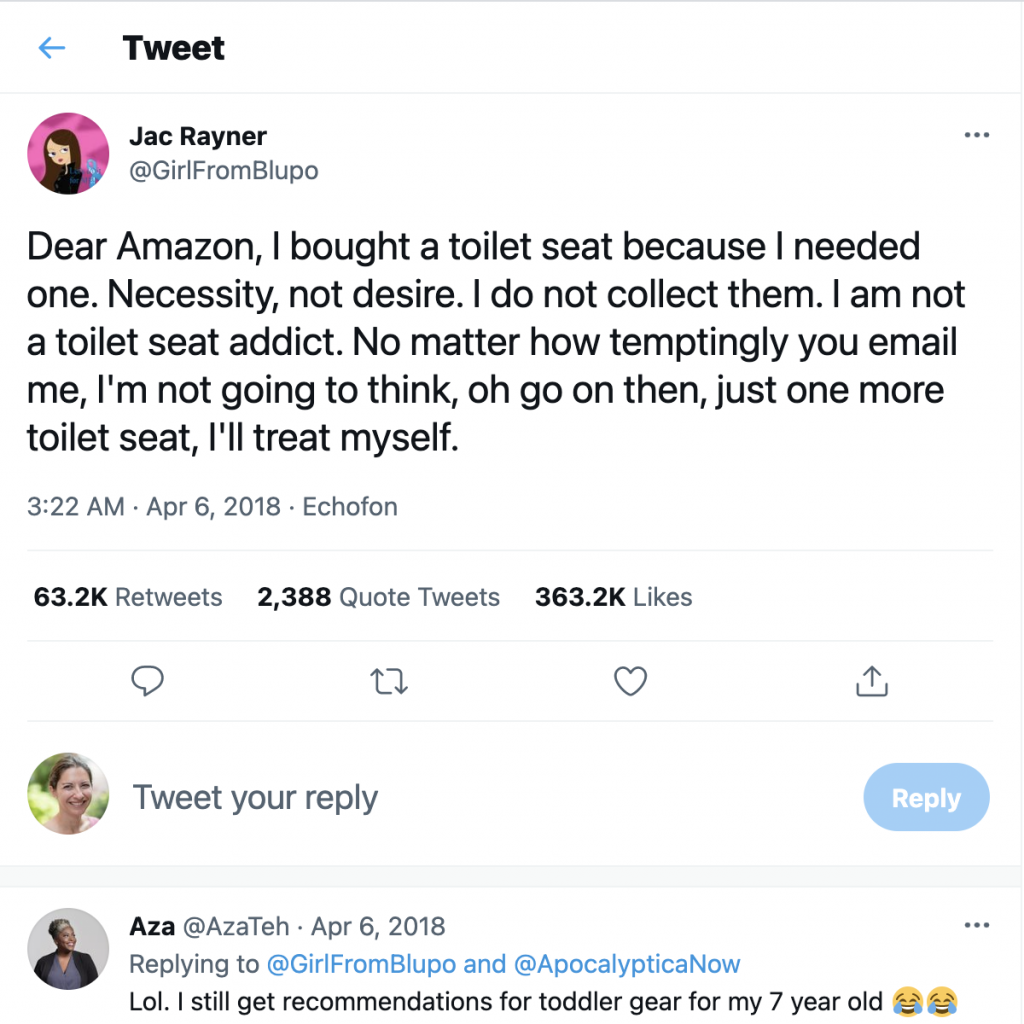Why is personalization invisible?
I believe it has something to do with how humans think of themselves. People tend to think of themselves (ourselves) as in control. This is particularly true when things are going well. For example:
- When someone has a successful business they rarely acknowledge how much of success is based on luck. Far more often you hear “I worked hard.”
- Very few people thank God/the Universe when they make every stop light on their way to work, yet they curse both when they are stuck in traffic.
What does luck have to do with personalization?
Good personalization isn’t noticeable. For example, you saw an advertisement for a coat you like. Or search returned a website you trust. Social media showed updates from your best friend. All of these feel normal, and so people don’t think about the work that goes into it.
It’s only when personalization is done poorly that it’s noticed. Sometimes it’s an ad based on a single data point. Other times it’s an uncomfortable assumption, like when I announced my marriage on Facebook and immediately started receiving ads for divorce lawyers. Suddenly the ads aren’t “normal”. They’re (poorly) “personalized”.

How often does personalization work?
It’s hard to find clear metrics on how often personalization works. Why? Because good personalization highlights something other than the fact that it’s personalized. It’s invisible.
But that’s not to say that success can’t be measured. Much like with any other type of content, key performance indicators can tell a lot. A good KPI connects to an actual goal and a clear hypothesis. So if the KPI is member retention, that means if member retention increases after implementing personalization, it proves the hypothesis that personalized content will increase member retention.
| Hypothesis | Goal | KPI |
| Members will stick around longer if they see personalized content | Improve member retention | member retention |
Invisible Personalization
Invisible personalization is good personalization. It’s the core tenet of user-centric design. If it’s focused on the user, it’s good. It shouldn’t be about the tool. With that in mind, your KPIs won’t be directly about personalization. Personalization is a means to an end.
Go forth, and be invisible!


